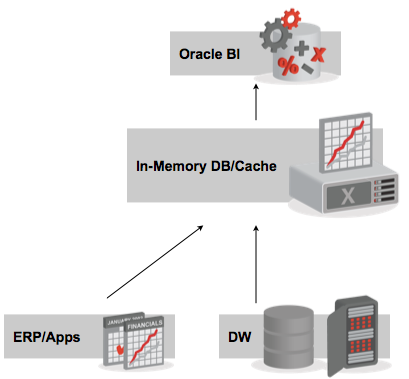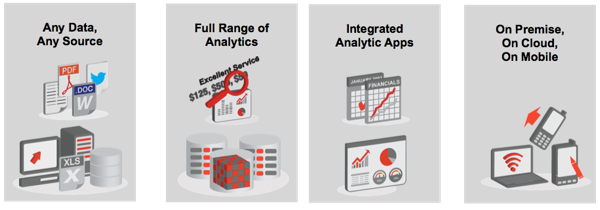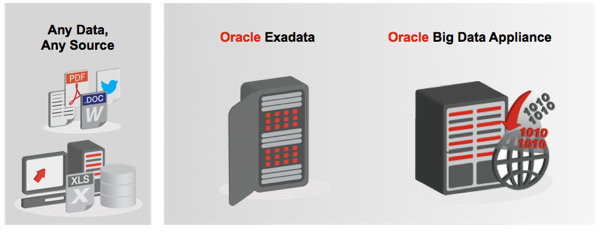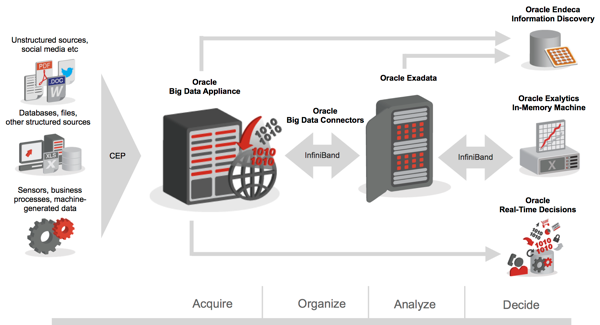Oracle Exalytics, Oracle R Enterprise and Endeca Part 1 : Oracle's Analytics, Engineered Systems, and Big Data Strategy
One of the presentations Rittman Mead gave at last week's Oracle Openworld was entitled "High Speed, Big Data Analysis using Oracle Exalytics" [PDF]. Although it was the last of my presentations it was probably the one that I most looked forward to delivering, as it talked about how Oracle's in-memory analytics server could also be used for advanced analytics, and unstructured data analysis along with OBIEE's traditional dashboards and ad-hoc reports. So how do Endeca Information Discovery and R, the most recent addition to Oracle's analytics toolkit, relate to Exalytics and what benefits does this high-end server provide for these tools? Over this next week I'll be looking at this topic in detail, with the following postings in the series (links will be added as each post is published).
- Oracle Exalytics, Oracle R Enterprise and Endeca Part 1 : Oracle's Analytics, Engineered Systems, and Big Data Strategy
- Oracle Exalytics, Oracle R Enterprise and Endeca Part 2 : Oracle Endeca, the Advanced Analytics Option and Oracle Exalytics
- Oracle Exalytics, Oracle R Enterprise and Endeca Part 3 : Flight Delays Analysis using OBIEE, Endeca and Oracle R Enterprise on Exalytics
For anyone new to the product, Oracle Exalytics In-Memory Machine is Oracle's "engineered system" for business intelligence and analytics. Typically used alongside Oracle Exadata Database Machine, an analogy is that Exalytics is the "set top box" to Exadata's 50" flat screen TV, in that it provides query acceleration and highly-interactive visuals to accompany the terabytes of data typically managed by an Exadata Database Machine server. So far on the blog we've mostly talked about Exalytics in the context of OBIEE, but it also hosts Oracle Essbase (a multi-dimensional OLAP server) and is certified for use with Oracle Endeca Information Discovery, Oracle's discovery/analytics tool for unstructured, semi-structured and structured data. Another way of thinking of Exalytics (idea courtesy of Oracle's Jack Berkowitz, who looks after the BI Presentation Server part of OBIEE) is that's it's like the Akamai web caching service; for a single end-user it generally provides faster page delivery than Oracle could provide from it's own web servers , but when it comes into its own is when there are 10,000 or 1m people trying to access Oracle's website at a time - Akaimai's cache, like Exalytics' cache, guarantees fast service when user numbers scale beyond just a few test users, due in Exalytics case to the TimesTen in-memory database that provides a mid-tier cache between OBIEE's BI Server and Presentation Server and the various data sources accessed in the dashboard.

As I mentioned before though, Exalytics also supports Essbase and the rest of the EPM product stack (where the product runs on Linux), with Essbase included in the Oracle BI Foundation Suite product bundle that comes with the base Exalytics server. Exalytics, from version 1.1, is also certified to run Endeca Information Discovery, details of which are in a series of blog posts that you can read on Rittman Mead's Endeca homepage here. In fact, this wide range of query tools and analytic engines is one of the four pillar's of Oracle's current business analytics strategy, which as the diagram below shows covers data from any source, analytics using multiple query tools and engines, packaged applications and delivery via the web, mobile, desktop, or embedded in business processes and applications.

"Big Data" is as I'm sure most readers will be aware, along with Cloud the current buzz-word and hot topic within Oracle and the wider IT world, and refers to much larger data sets than we're used to with relational databases holding much more granular data such as meter readings, bus movements, sensor data and the like. The interest in big data comes from its ability to provide us with much more context about people, activities and events of interest than we get with traditional data such as sales figures and product inventories, and is now made possible by server specs going up coupled with a bunch of new database and analysis techniques that eschew regular SQL and relational stores in favour of file-based databases, "NoSQL"-type languages and distributed processing tools that first crunch numbers and then extract useful information (Hadoop and MapReduce, for example). Oracle of course have put together a bunch of products to address Big Data requirements, including another engineered system called Oracle Big Data Appliance that couples a third-party distribution of Hadoop and MapReduce along with new Oracle products such as NoSQL and Oracle R Enterprise; Big Data Appliance therefore sits alongside Exadata as the second part of Oracle's engineered systems data management hardware/software product set.

The idea here then is that Big Data Appliance acts as a data gatherer/processor/cruncher for a big-data enabled analytics environment, with Big Data Appliance linked to Exadata via InfiniBand and ODI, via Oracle's Big Data Adaptors, taking nuggets of pre-processed data from Big Data Appliance and then loading them into Exadata for later analysis by Exalytics, Endeca or Oracle RTD.

Big Data Appliance is mostly concerned with acquiring and organising data from unstructured sources, then processing it into a structured form (via Hadoop and MapReduce) for loading into Exadata, or querying via tools such as Endeca and Oracle Real-Time Decisions. But Big Data Appliance also comes with something called R, and Oracle have also recently released a new database option called the Advanced Analytics Option that comes with Oracle R Enterprise, Oracle's added-value version of R that leverages the scale and capacities of the Oracle Database. So what is the Advanced Analytics Option and what is Oracle R Enterprise, and what can these new analytic capabilities provide for the BI Developer? We'll look at this topic in more detail in the second posting in this series, tomorrow.